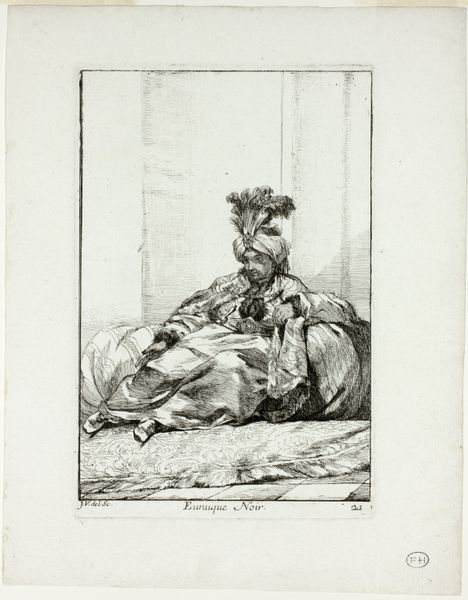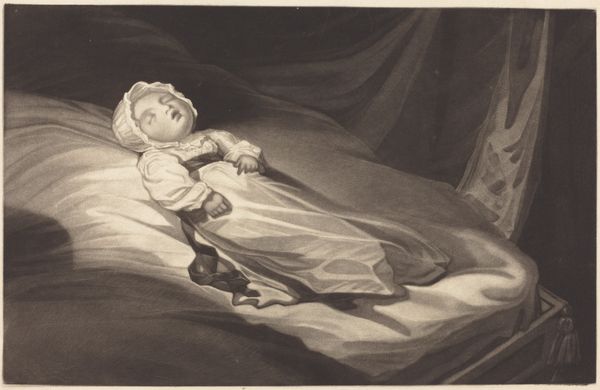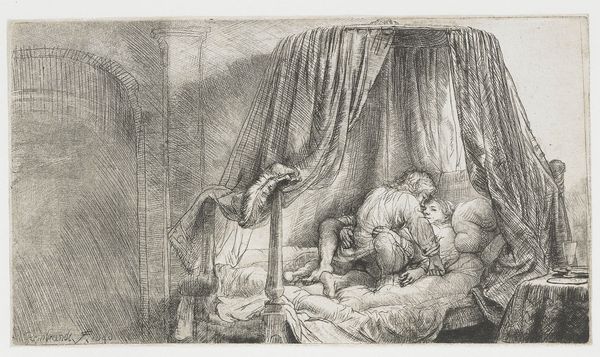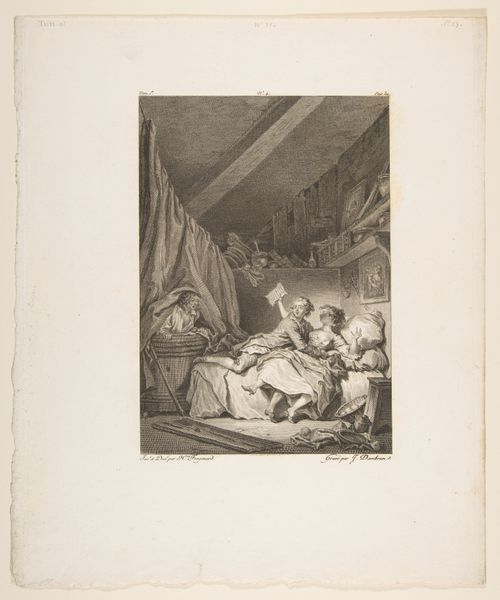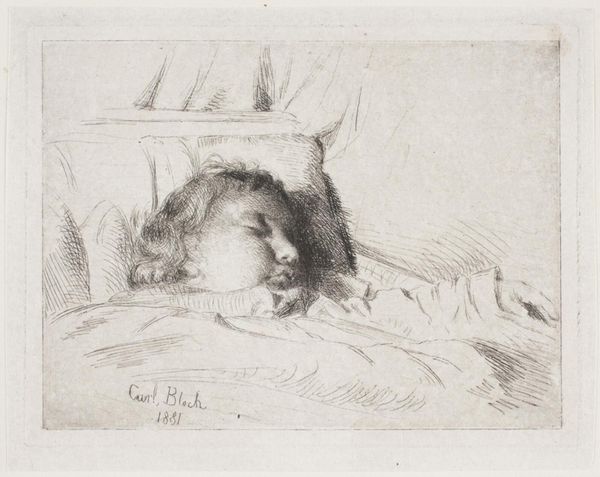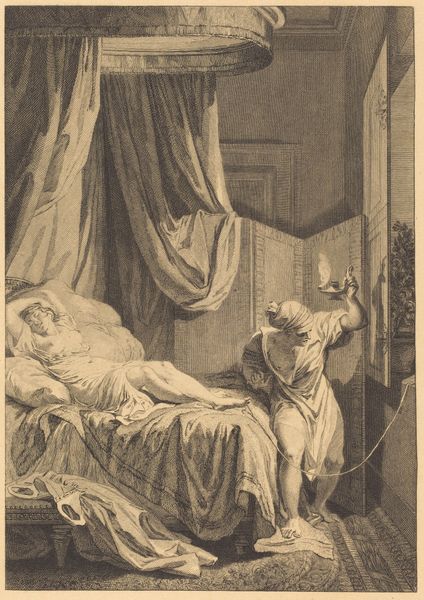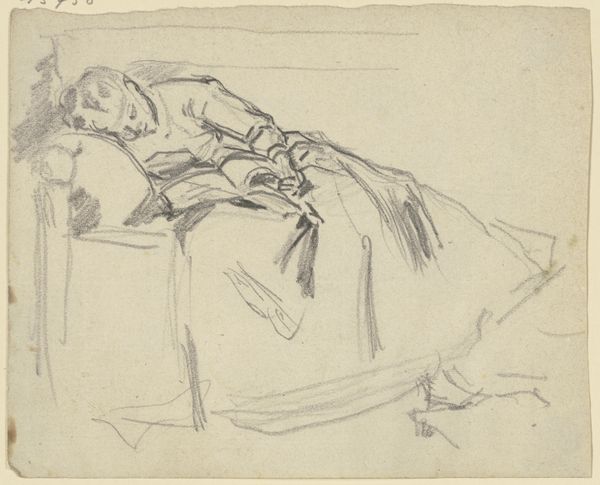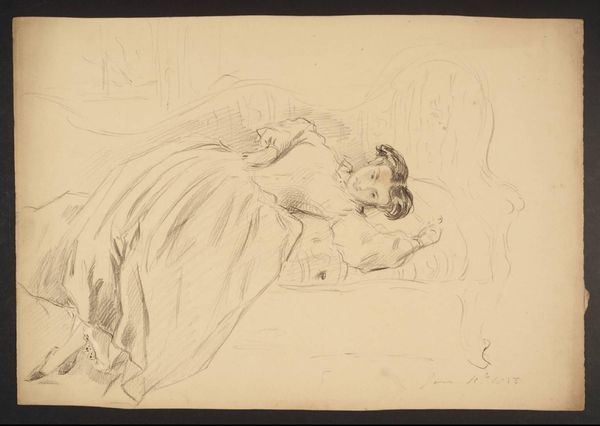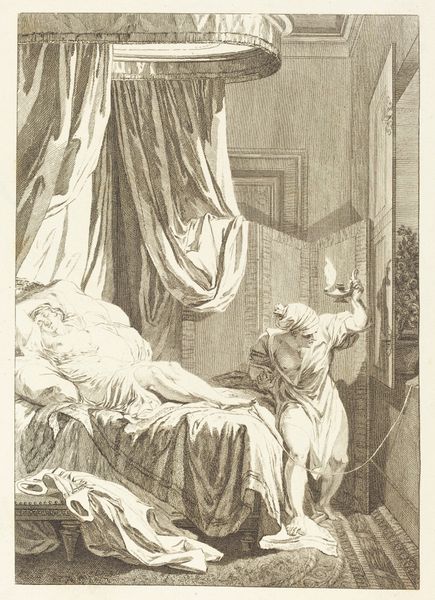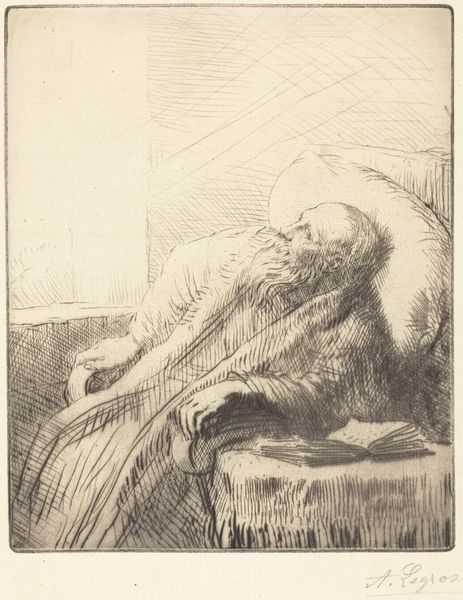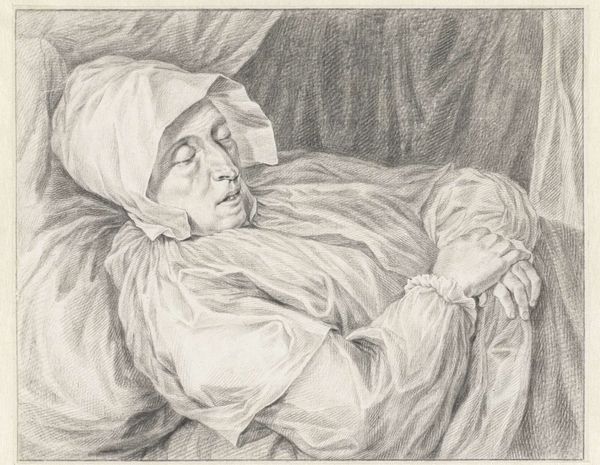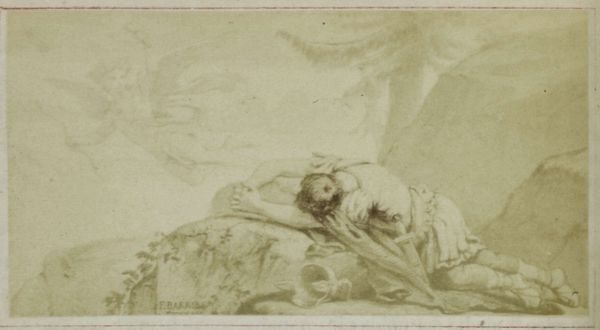
drawing, ink
#
portrait
#
drawing
#
ink
#
pencil drawing
#
portrait drawing
#
genre-painting
#
rococo
Dimensions: height 343 mm, width 468 mm
Copyright: Rijks Museum: Open Domain
Curator: This delightful sketch is “Madame Greuze on a chaise-longue with her dog” by Jean-Baptiste Greuze, dating from around 1757 to 1760. It's ink on paper and offers an intimate glimpse into the domestic life of the Rococo period. Editor: There's an undeniable languor to this piece. The fluid lines and monochromatic palette evoke a feeling of rest, almost a state of reverie. It makes me wonder about the making of this artwork; how was such an intimate and soft mood accomplished? Curator: Well, it’s important to note that this wasn’t intended as a finished piece but as a preparatory drawing, revealing Greuze's process. The choice of ink allowed him a fluidity and speed perfect for capturing the essence of a moment. You can almost see the tool gliding on paper with purpose, without hesitation. Think of the paper itself: What paper mills were accessible? Were the materials costly? This hints at his status and intended patronage. Editor: Indeed. And let's consider the social context. The Rococo period was all about portraying aristocracy in relaxed settings. Do you see any political power relationships on view here? Curator: Absolutely! We’re presented with a woman of leisure, a member of the bourgeoisie enjoying a private moment with her pet, far removed from the gritty realities of working people at the time. She possesses control, her existence detached from economic struggle. Editor: The chaise-longue becomes, in that reading, not just a piece of furniture but a symbol of social status, leisure, and perhaps even a subtle assertion of power through private space. This artwork exists in the context of pre-revolution French society. I wonder about its intended audience and if it was designed for public viewing. Curator: My assumption is, given the technique, materials, and subject matter, the artwork gives clues to how Greuze created an image that caters specifically to the tastes and aspirations of the privileged class of the moment, even acting as propaganda that serves the regime. It demonstrates not just skill, but a keen awareness of marketability. Editor: So, beyond the obvious artistic talent on display here, what this sketch ultimately provides is a window into the complex interplay of material production, social status, and the politics of image-making. Curator: Precisely. The way that Greuze handled those basic materials can give viewers the opportunity to have a greater understanding of his socio-economic standing and the role this portrait played for him in 18th century society. Editor: Indeed, and how perceptions and implications change throughout history when we re-contextualize such pieces through today’s socioeconomic lenses.
Comments
No comments
Be the first to comment and join the conversation on the ultimate creative platform.
